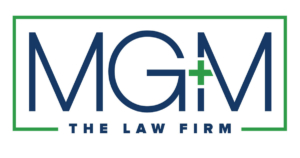Is there a moving target concerning compliance with greenhouse emission standards?
Legal Alert from MG+M The Law Firm. Is There a Moving Target When It Comes to Compliance with Greenhouse Emission Standards and is the Trucking Industry Caught in the Crosshairs? On April 1, 2021, the U.S. Court of Appeals for the Second Circuit, in City of New York v. Chevron Corporation, 993 F.3d 81 (2d…

Legal Alert from MG+M The Law Firm.
Is There a Moving Target When It Comes to Compliance with Greenhouse Emission Standards and is the Trucking Industry Caught in the Crosshairs?
On April 1, 2021, the U.S. Court of Appeals for the Second Circuit, in City of New York v. Chevron Corporation, 993 F.3d 81 (2d Cir. 2021), affirmed the dismissal of claims New York City brought against five of the top-ten largest cumulative producers of fossil fuels, foreign and domestic, in connection with their emission of greenhouse gases. The City brought claims of public nuisance, private nuisance, and trespass, and sought compensatory damages for past and future costs of changing the City’s infrastructure and property, as well as an injunction to abate the public nuisance and trespass should the oil companies fail to pay damages. The City did not argue that the companies’ conduct was illegal, but rather that the oil companies should bear the cost of the City’s efforts to mitigate the effects of global warming.
The Environmental Protection Agency serves to promulgate standards, rules, and programs to regulate pollution, carbon dioxide, and greenhouse gases, and enforce fuel-economy standards for stationary sources including power plants, as well as moving sources including cars, trucks, and aircraft. The Clean Air Act leaves the primary responsibility to states to regulate emissions with a source within their respective borders, but often limits states to simply comment on proposed EPA rules or on another state’s emission plan.
Ultimately, the Second Circuit held that New York City’s suit could not proceed under New York or federal common law as the City sought to impose New York nuisance standards on companies with emission sources outside of New York. However, the Court did not stop there. It went further and outlined how New York can redress pollution entering from out-of-state. The Court explained that a New York resident could bring a nuisance suit against a Connecticut-based emitter, for example under Connecticut law without overturning the Clean Air Act’s carefully balanced scheme, even if the alleged harm occurred in New York.
So what does this mean for transportation companies? According to the EPA, the transportation sector generates the largest share of U.S. greenhouse gas emissions, 29% of all emissions in 2019.[1] This makes transportation companies the next most likely targets for these types of environmental claims. As efforts to mitigate global warming gain traction the transportation industry will be placed squarely in the crosshairs.
What are the immediate implications of the Second Circuit’s decision for the transportation industry? One is that transportation companies can reasonably expect to be held accountable for the pollution they emit in any state, pursuant to that state’s law. For example, a company that sends a pollution –emitting truck through the Bronx may be liable for damages under New York law.
The transportation industry may find one kernel of comfort from this decision, as it is consistent with the position that transportation companies are not required to incur the cost of complying with the “strictest standards” in U.S. jurisdictions at any given time regardless of whether their businesses actually operate in those jurisdictions, in addition to complying with federal law. However, that is little protection for an industry that is facing numerous complex legal and regulatory hurdles.
Accordingly, the best and perhaps most cost-effective practice is for companies to first understand the nature of the legal and regulatory framework as it pertains to mitigation of greenhouse emissions and then strategically plan a multilevel response. One such level of that response almost certainly will be further litigation at the circuit level as well as the United States Supreme Court challenging various admission standards and schemes. MG+M is closely following the state and federal cases involving disputes subject to the Clean Air Act and related statutes, and will provide further updates as new developments arise.
[1] https://www.epa.gov/ghgemissions/sources-greenhouse-gas-emissions
